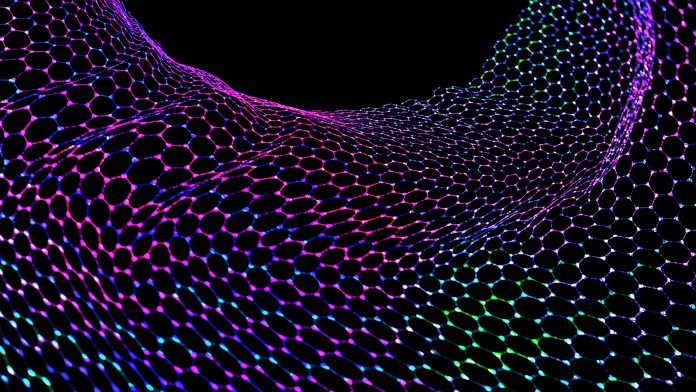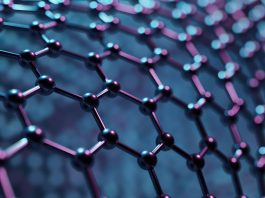A team of researchers has been experimenting on stacking and twisting layers of 2D materials. They have found that the layers interact by creating geometric patterns which impact the material properties.
Material graphene, the thickness of which is only one layer of carbon atoms, was first isolated in 2004. The discovery of this essentially 2D material, has led to a global boom in materials research.
Now, “2D materials” are manufactured, out of many different types of atoms. These atomically thin materials often have unique material properties not found in conventional, thicker materials.
Another area emerging in this field of research is experimentation into stacking these 2D layers at different angles.
A team from TU Wien and the University of Texas has been researching the interaction of layers of 2D materials. They have discovered that the carbon atoms of the two layers interact in a way that creates intricate geometric patterns, and these patterns have a significant impact on the material properties.
Phonons, which are the lattice vibrations of the atoms, are considerably affected by the angle at which the two 2D layers are placed on top of each other. As a result, with just tiny rotations of layers, the material properties can be significantly altered.
This idea can be tested with regular meshes placed on top of one another: If both grids are completely in line, it is difficult to tell whether it is one or two grids: the regularity of the structure has not changed.
However, if the grids are turned by a small angle, there are places where the grid points of the meshes largely match, and areas where they do not. Through this, interesting patterns emerge. This is known as the moiré effect.
“You can do exactly the same thing with the atomic lattices of two material layers,” said Dr Lukas Linhart from the Institute for Theoretical Physics at TU Wien.
When this process is done on graphene, the material properties drastically change and it becomes a superconductor if two layers of the material are combined in a certain way.
Professor Florian Libisch, project lead at TU Wien commented: “We studied layers of molybdenum disulphide, which, along with graphene, is probably one of the most important 2D materials.
“If you put two layers of this material on top of each other, so-called Van der Waals forces occur between the atoms of these two layers. These are relatively weak forces, but they are strong enough to completely change the behaviour of the entire system.”
By running complex computer simulations, the team examined the quantum mechanical state of the new bi-layer structure caused by these weak additional forces, and how it affects the vibrations of the atoms in the two layers of 2D materials.
“If you twist the two layers a little bit against each other, the Van der Waals forces cause the atoms of both layers to change their positions a little bit,” said Dr Jiamin Quan, who led the experiments in Texas, which confirmed that the angle of rotation can alter which atomic vibrations are physically possible in the material.
Dr Linhart added: “In terms of materials science, it is an important thing to have control over phonon vibrations in this way.
“The fact that electronic properties of a 2D material can be changed by joining two layers together was already known before. But the fact that the mechanical oscillations in the material can also be controlled by this now opens up new possibilities for us. Phonons and electromagnetic properties are closely related. Via the vibrations in the material, one can therefore intervene in important many-body effects in a controlling way.”
Now the team has discovered the influencing effects on phonons, they plan to describe the effects on phonons and electrons combined, in the hope of learning more about important phenomena such as superconductivity.









